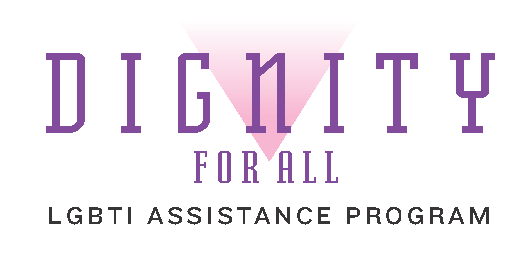DIGNITY FOR ALL’s THEORY OF CHANGE
The context of our work and the changes we want to see, along with how we seek to accomplish them.
What is the context in which dignity for all currently operates?
LGBTQI+ people and movements face constant and numerous risks. Despite progress on LGBTQI+ human rights in some countries, there are many places where LGBTQI+ people face severe threats to their safety and security every day. They are often targeted for their identity or affiliation with LGBTQI+ communities, and for their engagement in LGBTQI+ human rights work. The global trend of shrinking civil society space multiplies the impact of the risks that LGBTQI+ movements already face. They are often the first to be targeted, are already operating under extremely disadvantaged conditions, and often face the most severe threats. Despite this challenging context, LGBTQI+ movements succeed in making progress and increasing visibility. Increased attention to and resources for proactive approaches to safety and security are critical to ensure that LGBTQI+ movements and communities are prepared to mitigate vulnerabilities and better withstand these attacks.
Dignity for All operates in three contexts that overlap. Our task is to build and stabilize capacity and resources as much as possible in a consistent risk situation in order to capitalize on opportunities and/or most effectively counter a crisis.
What change does Dignity for All hope to see, and what strategies do we use for change?
Our vision for success is that:
LGBTQI+ movements are sustainable, in terms of their capacities and resources, with regards to safeguarding safety and security for LGBTQI+ communities, and
LGBTQI+ communities are safe and secure and enjoy rights and remedies in environments free from violence and discrimination.
Dignity’s strategies for change include:
-
Accessing donor spaces
Convening donors, movements, and communities
Engagement around safety and security in donor spaces
Publications about risk and response
-
Relations with human rights organizations, humanitarian organizations, and others
Quick linking up with (potential) allies in crisis and opportunity
Building links with state actors and multilaterals
Outreach to new allies to seize opportunities
Community mobilization, coordination, and outreach
-
Best practices publications for donors
Safety and security capacity building
Individual emergency granting
Relocation strategies pre-crisis
Well-being support
Regranting for crisis support and shelter



